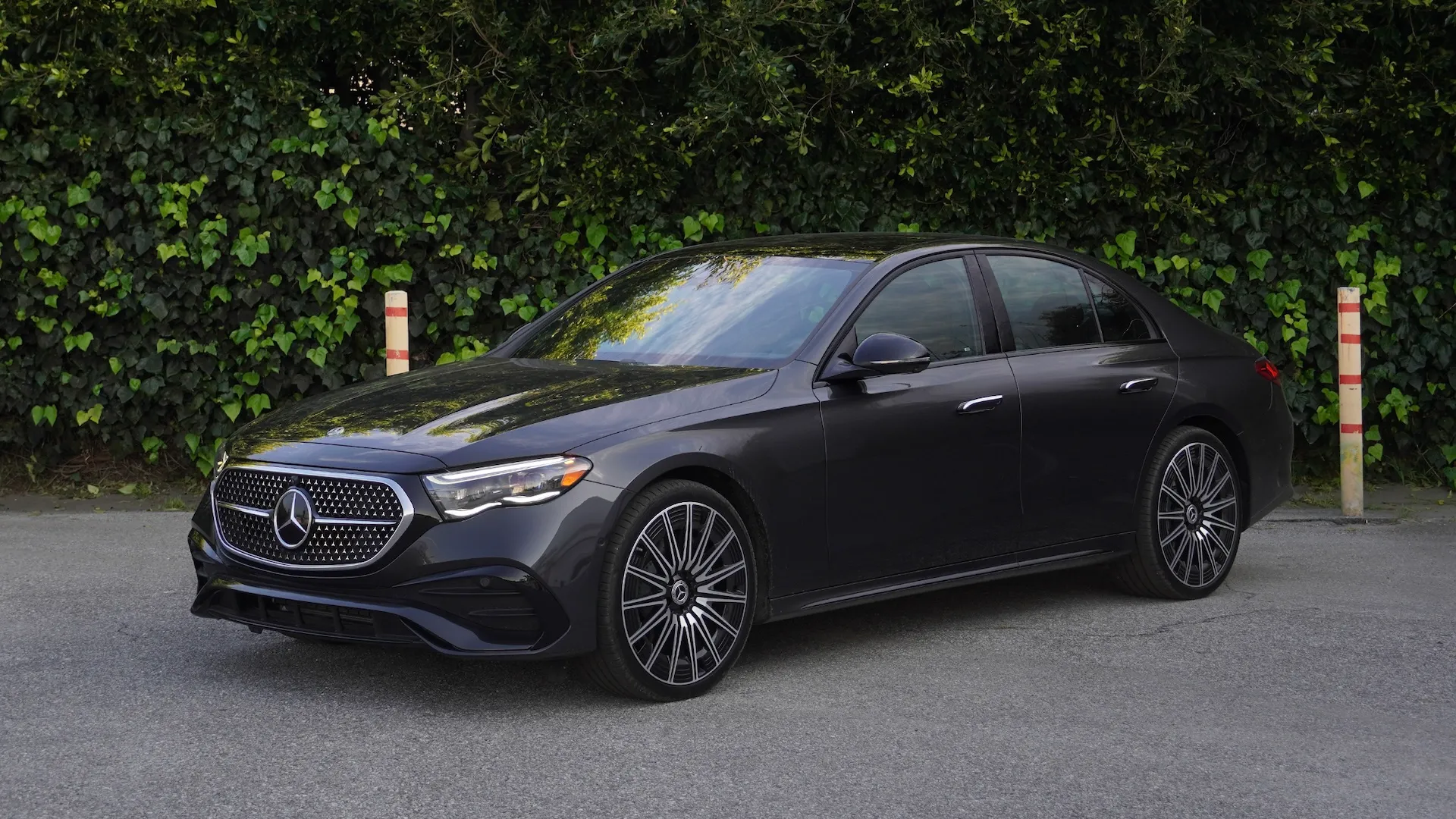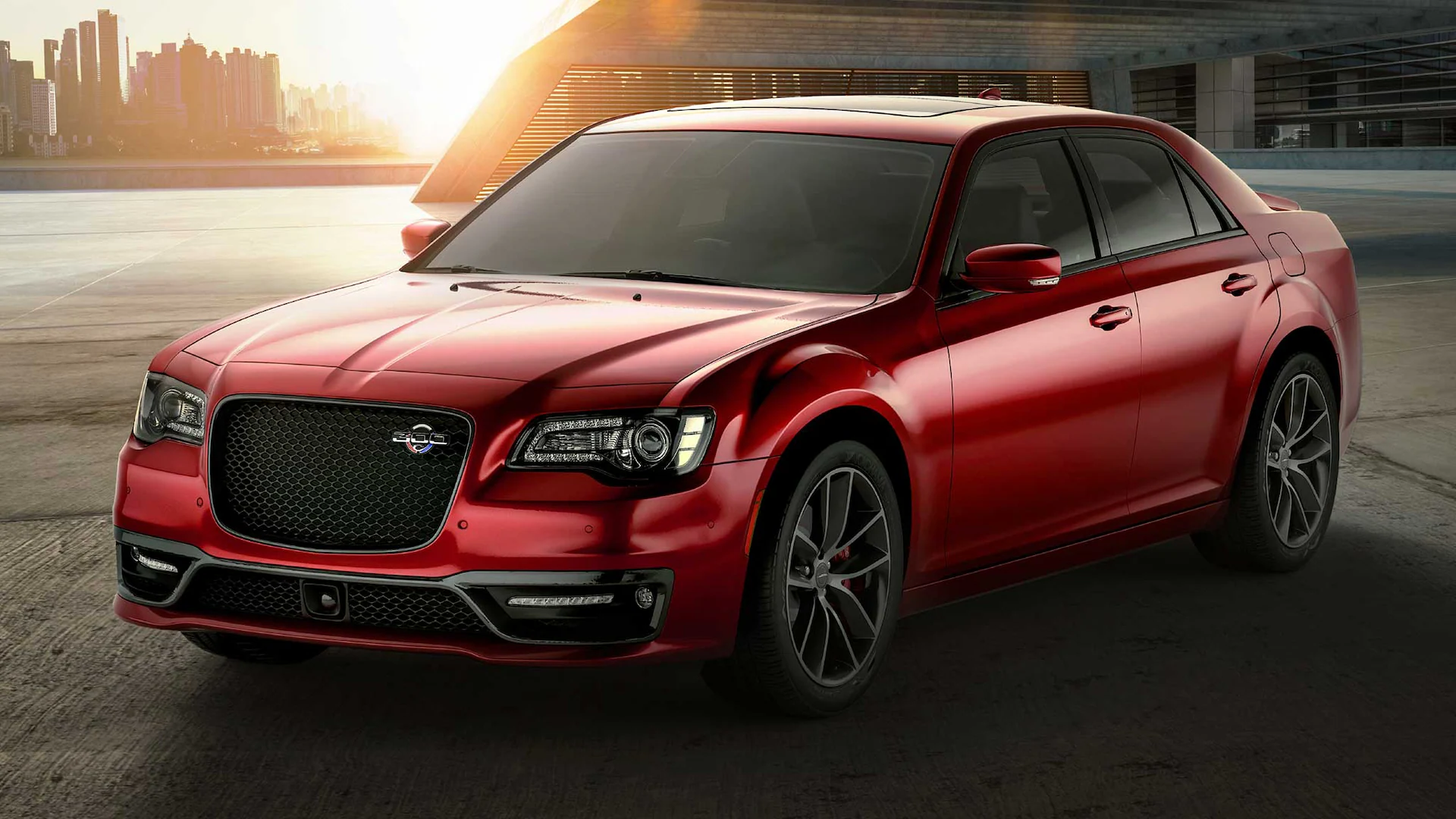In the evolving world of automotive design, the steering wheel is no longer just a tool for controlling direction—it’s become a central command hub for interacting with a vehicle’s growing list of technologies.
Once limited to turning the car left or right and possibly honking the horn, modern steering wheels now incorporate dozens of functions, from adjusting the volume and activating voice assistants to controlling cruise settings, answering calls, and navigating digital menus.
As manufacturers race to integrate more features, the steering wheel has become a critical user interface, bridging the gap between human intention and machine execution.
This evolution, however, is a double-edged sword. While the added functionality is welcomed, especially in an age where safety and convenience are paramount, its execution can vary drastically between brands and models.
Some manufacturers excel at designing steering wheels with intuitive layouts, tactile feedback, and ergonomic placement, allowing drivers to make adjustments quickly without ever taking their eyes off the road.
Others, unfortunately, fall into the trap of over-complication or prioritizing aesthetics over usability. In these vehicles, controls may be poorly grouped, buttons might be touch-sensitive with no tactile cues, or the layout may simply be unintuitive, leading to driver distraction and frustration.
It’s no secret that distracted driving is a growing concern. According to global road safety data, even a two-second glance away from the road can double the risk of an accident.
A confusing steering wheel interface—especially one that requires visual confirmation or trial and error to operate—can become a silent contributor to this issue.
That’s why it’s vital for steering wheel controls to be designed with human factors in mind, ensuring they enhance, rather than detract from, the driving experience.
What separates a great steering wheel layout from a problematic one is a mix of thoughtful design, ergonomics, and real-world usability. The best layouts have clearly defined zones for cruise control, media, and driver assistance features.
Buttons are grouped logically and spaced to minimize accidental inputs. The driver can confidently reach and operate any control using muscle memory alone. These designs don’t just make driving safer—they make it more enjoyable, intuitive, and efficient.
On the other end of the spectrum are vehicles that make simple tasks like adjusting the volume or changing driving modes feel like a scavenger hunt.
These designs often prioritize form over function, embracing touch-sensitive surfaces that lack feedback, hiding controls in odd locations, or crowding too many buttons into small spaces.
For new owners, this can be especially frustrating, as there’s a steep learning curve just to operate their car’s basic functions confidently.
This article dives into both sides of the design spectrum. We’ll first highlight five vehicles that get the steering wheel button layout just right, blending aesthetics with ergonomic brilliance and user-friendly interaction. These are cars where every button feels like it belongs, and every function is exactly where you’d expect it to be.
Then, we’ll examine five vehicles that, despite their strengths in performance or luxury, fall short when it comes to steering wheel control design. These are the models where confusing layouts, awkward placement, or poor feedback make even simple interactions unnecessarily complicated.
Whether you’re shopping for a new car, a design enthusiast, or simply curious about how these everyday touchpoints impact the driving experience, this comparison will offer valuable insights into what makes—or breaks—great steering wheel design.
Because in the end, when you’re behind the wheel, comfort and control should go hand in hand—and your thumbs should never be at war with your technology.
Also Read: 10 SUVs That Are Overbuilt in the Best Way Possible With Power, Luxury, and Road Dominance
Steering Wheels with Ideal Button Layout

Audi Q7
Audi has long been a leader in providing luxury and ergonomic interiors, and the Audi Q7’s steering wheel is a perfect example of their thoughtful design.
The button layout is clean, intuitive, and highly functional, making it easy for the driver to operate essential controls without losing focus on the road.
Audi has effectively combined traditional button-based controls with touch-sensitive panels. The buttons, including volume control, media playback, and cruise control, are clearly labeled and placed within easy reach.
Each button is ergonomically positioned so that the driver can make adjustments quickly and efficiently, without having to stretch their fingers or divert their attention from driving.
This thoughtful design allows drivers to manage the vehicle’s various systems, such as temperature, navigation, and entertainment, seamlessly, ensuring that no task feels like a chore.
One of the key features of the Audi Q7’s steering wheel is the tactile feel of the buttons. Audi’s attention to detail is evident in how they’ve engineered the buttons for optimum usability.
The buttons have just the right amount of resistance, so when pressed, there’s no ambiguity whether the input has been received, giving drivers confidence that their commands have been understood.
The thumb pads and capacitive touch sections are strategically placed on the wheel to make it easier for drivers to control things like adaptive cruise control and driving modes.
The positions of the buttons are thoughtfully spaced out to avoid accidental presses, which can be a common problem in vehicles with cluttered steering wheel layouts.
Additionally, the materials used for the steering wheel’s construction enhance the user experience. The soft leather-wrapped wheel provides a comfortable grip for the hands, while the brushed metal elements add a touch of sophistication.
Whether you’re engaging the cruise control system or adjusting the volume during a long drive, the Audi Q7 steering wheel’s layout allows you to interact with the car’s features effortlessly and comfortably.
It’s an excellent example of how a luxury vehicle’s steering wheel can offer both form and function in a harmonious balance.

BMW 3 Series
The BMW 3 Series is renowned for its driving performance and precision, and the steering wheel layout plays a crucial role in ensuring that the driver has full control over the vehicle’s systems.
The 3 Series steering wheel features a thoughtfully designed button arrangement that allows drivers to adjust everything from volume and media settings to cruise control and vehicle information with minimal effort.
One of the most notable features of the 3 Series’ steering wheel is its multi-function buttons. These allow drivers to toggle between different menus and modes, such as adjusting the car’s driving settings or navigating through music playlists, all without taking their hands off the wheel.
This multi-functionality helps to keep the driver focused on the road, making it easier to interact with the car’s systems while minimizing distractions.
The button layout on the 3 Series is well-organized, with buttons for related features grouped together. For instance, the buttons for the cruise control system are all positioned in a cluster near the right thumb position, while media controls are placed close to the left thumb.
This logical grouping of buttons reduces confusion, so drivers don’t need to look down or fumble with unfamiliar controls.
Moreover, the placement of the buttons ensures that they are accessible without requiring the driver to stretch their fingers or make uncomfortable movements. This means that, even during longer drives, the steering wheel remains comfortable to use, and the driver can quickly make adjustments without unnecessary effort.
The BMW 3 Series steering wheel also excels in terms of tactile feedback. The buttons are designed with just enough resistance to prevent accidental presses but not so much that they feel stiff or hard to operate.
This is a significant advantage for maintaining control and improving the driving experience, as it allows the driver to quickly and confidently interact with the car’s features. The feel of the steering wheel is balanced, offering a firm yet comfortable grip, which is essential for ensuring a connected driving experience.
Overall, the BMW 3 Series steering wheel is a model of simplicity and functionality, ensuring that the driver can maintain focus on the road while interacting with key vehicle features in a way that feels natural and intuitive.

Mercedes-Benz E-Class
The Mercedes-Benz E-Class offers a sophisticated and luxurious driving experience, and the steering wheel plays an integral role in enhancing this experience. The layout of the buttons is streamlined and easy to use, ensuring that drivers can control a wide range of features without becoming distracted.
The E-Class incorporates both physical buttons and touch-sensitive panels that respond to the slightest touch, which helps create a more futuristic and refined interface. The controls for the infotainment system, cruise control, and phone functions are all positioned in a way that feels natural to the driver.
For example, the touchpads on the steering wheel allow users to swipe and tap through various menus, adjusting things like media volume, navigation, and climate control settings without taking their hands off the wheel.
One of the advantages of the Mercedes-Benz E-Class steering wheel is the high level of customization it offers. The buttons and touchpads are not only easy to use but can also be configured to suit the driver’s preferences.
This level of personalization means that each driver can set up the controls to be as intuitive as possible for their specific needs. Additionally, the steering wheel has been designed with premium materials, such as leather-wrapped surfaces and metal accents, to give it a luxurious feel.
This design also ensures that the wheel remains comfortable to hold, even on long journeys, which is a key factor in enhancing the driving experience.
Furthermore, the controls on the E-Class steering wheel provide haptic feedback, giving the driver a tactile confirmation that their input has been recognized. This is particularly useful for functions like adjusting the driving modes or changing the settings on the infotainment system.
The responsiveness of the controls ensures that the driver can make adjustments without delay, which adds to the smoothness of the driving experience. Whether you’re driving through a city or cruising down the highway, the Mercedes-Benz E-Class steering wheel makes controlling the car’s various features a seamless part of the journey.

Tesla Model 3
Tesla is known for its minimalist design approach, and the Model 3’s steering wheel is a perfect example of this philosophy. At first glance, the Tesla Model 3 steering wheel may seem deceptively simple—there are no physical buttons on the wheel itself, but rather a set of scroll wheels and a few other controls.
These scroll wheels serve multiple functions, including controlling media volume, adjusting cruise control settings, and even interacting with some vehicle features.
The layout is intentionally designed to reduce clutter, offering a clean and unobstructed view, which enhances the driving experience. The absence of physical buttons not only creates a more modern, futuristic feel but also reduces the likelihood of accidental presses.
The dual-scroll wheel design is particularly innovative. Tesla uses these scroll wheels to control a variety of functions with a simple swipe or press. For example, turning the scroll wheel adjusts the volume, while pressing it can answer phone calls or activate other features.
This allows for an extremely responsive and intuitive interface that puts the most essential functions at the driver’s fingertips.
Additionally, the scroll wheels are tactile and offer distinct feedback, which helps prevent confusion about whether the input has been received. This clean, button-free design reflects Tesla’s focus on reducing distractions and creating a more connected, high-tech driving experience.
Despite its simplicity, the Tesla Model 3 steering wheel doesn’t sacrifice usability. The layout allows drivers to interact with the car’s systems while keeping both hands on the wheel at all times.
The controls are placed in such a way that you don’t have to take your eyes off the road, which is crucial for safety. The minimalistic design ensures that drivers remain focused on the road ahead while still having full control over key features.
The smooth, soft-touch wheel is also very comfortable to hold, providing a premium feel that complements the high-tech nature of the car. The Tesla Model 3 steering wheel is a perfect example of how simplicity, innovation, and functionality can come together to create a truly intuitive and enjoyable driving experience.

Ford F-150
The Ford F-150 steering wheel offers a fantastic blend of functionality and comfort, making it an excellent choice for truck drivers who rely on their vehicles for both work and leisure.
The button layout on the F-150 is highly intuitive, with large, easy-to-use controls that allow drivers to quickly access key functions such as cruise control, media, and hands-free calling.
One of the standout features is the ergonomic positioning of the buttons, which ensures that the driver doesn’t have to stretch or move their hands away from the wheel to make adjustments.
Whether you’re adjusting the volume, changing the station, or activating the cruise control, everything is within easy reach, even for drivers with large hands or those who wear gloves while driving.
Ford has also designed the F-150 steering wheel to be particularly durable, making it suitable for tough work conditions. The buttons are robust and have a satisfying tactile feel, which ensures that even in harsh conditions, they continue to perform reliably.
The placement of the buttons is straightforward, with all the commonly used controls grouped together. This design reduces the likelihood of confusion and ensures that the driver can make adjustments quickly and easily, even when driving on uneven terrain or in busy traffic.
Another notable feature of the Ford F-150’s steering wheel is the comfort it provides. The wheel is wrapped in high-quality leather, offering a soft yet firm grip, which is essential for long drives or when navigating rough roads.
The steering wheel’s design also allows for adjustability, ensuring that drivers of different sizes can find a comfortable driving position. Overall, the F-150 steering wheel layout strikes an excellent balance between usability, comfort, and durability, making it one of the best in its class for both everyday use and demanding tasks.
Steering Wheels That Confuse Drivers

1. Jaguar F-Type
The Jaguar F-Type offers sleek styling and exhilarating performance, but when it comes to user interface—specifically the steering wheel layout—it falls short of expectations. At first glance, the wheel appears sophisticated, matching the luxurious aesthetic of the rest of the cabin.
However, upon closer use, it becomes apparent that the wheel is overloaded with buttons, toggles, and touch-sensitive pads that are crammed into a relatively small space. The button density may look impressive, but it can overwhelm drivers, especially when they’re trying to make quick adjustments while keeping their eyes on the road.
One of the major issues lies in the proximity of the buttons to one another. Many functions—such as media control, voice commands, cruise settings, and drive assist features—are packed too tightly, making it easy to accidentally press the wrong button.
For example, the cruise control settings can be too easily confused with phone or volume controls because of their close placement and similar tactile feel.
In dynamic driving situations, such as navigating corners or passing on highways, this confusion can lead to momentary distractions—something you definitely don’t want when driving a sports car with the power of the F-Type.
Additionally, the lack of intuitive grouping exacerbates the problem. The buttons don’t follow a logical layout, and functions that could have been combined or streamlined are instead distributed awkwardly across the surface.
For a car that champions precision and control on the road, the lack of clarity in the steering interface feels oddly misplaced. While some drivers may adapt over time, the learning curve is steep.
A premium sports car should inspire confidence and ease of use—but with the F-Type’s cluttered and confusing steering wheel, the driver often ends up second-guessing their inputs rather than enjoying the road ahead.

2. Land Rover Range Rover
The Land Rover Range Rover is a status symbol in the SUV world, combining luxury, off-road capability, and comfort. However, the steering wheel design presents a frustrating paradox.
Despite the vehicle’s premium price tag and attention to detail in other areas, the button layout on the wheel is often unintuitive and distracting.
Land Rover chose to implement a mix of touch-sensitive surfaces and traditional buttons, but the execution is less than ideal. The result is a steering interface that looks sleek but lacks practicality, especially when the vehicle is in motion.
Touch-sensitive controls sound great on paper, offering a modern, tech-forward experience. But in practice, they can be finicky, unresponsive, or overly sensitive. A light graze may activate a function unintentionally, while a firmer press might go unrecognized.
For example, changing media tracks or adjusting the volume sometimes takes more effort than it should, which can lead to driver frustration.
Additionally, the layout places key controls like adaptive cruise settings, voice command, and phone integration close together without clear separation. This design choice increases the likelihood of mistakes, which is not acceptable in a vehicle where convenience and composure are core selling points.
Another issue is the learning curve. New Range Rover owners often need to spend significant time getting used to how the steering wheel controls behave, especially since functions are not consistently labeled or logically grouped.
In a vehicle meant to provide a luxurious and relaxed driving experience, fumbling with buttons that don’t respond consistently or are hard to locate can significantly detract from the sense of comfort.
Ultimately, the steering wheel design doesn’t match the intuitive nature of the rest of the Range Rover experience and serves as a reminder that elegance should never come at the cost of usability.

3. Chrysler 300
The Chrysler 300 offers a strong presence with its bold design and comfortable ride, but its steering wheel control scheme doesn’t deliver the same sense of refinement. At first glance, the wheel appears fairly standard.
However, once in use, drivers quickly discover that the arrangement of buttons lacks ergonomic thought.
The control layout is not intuitive, and many of the buttons—particularly those used for navigating menus, changing audio settings, or activating voice commands—are small, hard to differentiate by touch, and placed too closely together.
One particularly confusing aspect of the Chrysler 300’s steering wheel is the placement of the hidden rear-facing audio controls. These small buttons are tucked behind the spokes of the wheel, which means drivers often find themselves fumbling blindly while trying to change tracks or adjust the volume.
This placement not only lacks visibility but also makes quick adjustments more cumbersome than necessary. The problem is compounded by the fact that these rear buttons are not intuitive in layout or function, and drivers who aren’t familiar with Chrysler’s system might not even know they exist at first.
Furthermore, the lack of customization and feedback adds to the frustration. The buttons don’t offer enough resistance or tactile confirmation, leading to uncertainty about whether a command was registered.
There’s also little logic to how functions are grouped—sometimes media and phone controls are mixed together, and cruise control settings are split awkwardly across different parts of the wheel.
In a vehicle that aims to offer a premium driving experience, this confusing setup feels like an afterthought. The result is a user experience that undermines the otherwise relaxing and smooth character of the Chrysler 300.

4. Volkswagen Golf GTI
The Volkswagen Golf GTI is beloved for its sporty character and practical appeal, but its steering wheel design—particularly in newer models—presents usability challenges.
Volkswagen recently moved toward touch-sensitive controls in place of traditional buttons, which has stirred controversy among enthusiasts and new buyers alike.
While these controls are visually sleek and match the modern cabin aesthetic, they often lead to unintentional inputs and a clumsy user experience. The system lacks the clarity and precision that driving a performance-oriented car like the GTI deserves.
The key issue with the Golf GTI’s steering wheel lies in the button responsiveness and arrangement. The touch controls require an exact amount of pressure and swipe gestures, which can be difficult to manage while driving.
For example, adjusting the volume or skipping tracks may demand more attention than necessary, forcing drivers to look down or reposition their hands.
Unlike tactile buttons that can be felt and memorized through muscle memory, touch-sensitive panels offer little feedback, leading to second guesses and potentially distracting situations. The steering wheel’s lack of traditional texture and response reduces confidence in its usability.
Moreover, the button groupings are not particularly logical. Functions like adaptive cruise control and lane assist are positioned close to media controls, increasing the chance of triggering the wrong feature.
The button icons can also be vague, especially for new drivers unfamiliar with VW’s interface. While the GTI continues to offer an outstanding driving experience in terms of handling and performance, the steering wheel controls detract from the joy of the drive.
In a car that’s meant to engage and delight its driver, steering inputs should be effortless—not a source of friction.

5. Chevrolet Corvette C8
The Chevrolet Corvette C8 represents a radical shift in the Corvette’s design language, moving to a mid-engine layout and a driver-focused cockpit. While many enthusiasts appreciate the bold changes, the steering wheel design—and specifically the button layout—has sparked debate.
The square-shaped, flat-top and flat-bottom wheel is unlike anything found in most production cars, and while it looks futuristic, its functionality is compromised. The shape alone can take time to get used to, but the arrangement and labeling of buttons make matters more difficult for everyday use.
One major issue is the lack of intuitive placement. Cruise control, voice activation, and media settings are positioned in tight clusters on small surfaces, with little space between them.
For drivers who are used to more conventional wheel designs, the Corvette C8 requires a steep learning curve. In spirited driving situations, where drivers need to maintain maximum control, reaching for a poorly placed button can be distracting and even risky.
Additionally, the compact shape of the wheel limits space for logical grouping of functions, so some controls feel awkwardly crammed in or placed too far from the driver’s natural thumb position.
Another limitation is the low feedback quality of the controls. The buttons lack the satisfying click or tactile sensation that provides reassurance during operation. This becomes even more problematic when trying to quickly activate a function during dynamic driving.
A performance car like the Corvette should offer immediate, confident control at all touchpoints—including the steering wheel. Unfortunately, the overemphasis on a futuristic look compromises the ease and safety of use.
While the C8 is groundbreaking in many respects, the steering wheel layout feels like a missed opportunity to blend innovation with intuitive design.
Also Read: 10 Classic Cars That Were Once Popular but Are Now Forgotten
As cars become more technologically advanced, the design of the steering wheel increasingly determines how effectively and safely drivers interact with those technologies.
It’s easy to overlook just how central the steering wheel has become in the modern driving experience—until you use one that’s poorly designed. Our journey through ten very different vehicles has shown just how dramatically a steering wheel’s layout can enhance or hinder that experience.
Vehicles like the Audi Q7, BMW 3 Series, Mercedes-Benz E-Class, Tesla Model 3, and Ford F-150 demonstrate what it means to prioritize the driver in design.
In these cars, the steering wheel doesn’t just serve a functional purpose—it becomes a thoughtfully designed interface that integrates convenience, safety, and control.
The buttons are responsive and tactile, the layout is intuitive, and functions are grouped logically. Drivers can make adjustments on the fly, often without even glancing down. That’s more than just convenience; it’s a major safety advantage.
Take the Tesla Model 3, for example. Its minimalist approach, using multi-functional scroll wheels, represents a bold departure from the norm. Yet it succeeds because of its simplicity and logic.
The BMW 3 Series, on the other hand, sticks to a more traditional layout but executes it perfectly, with groupings that make sense and buttons that feel natural under the thumb.
The Ford F-150 focuses on usability in rugged conditions—large, tactile buttons that can even be used with gloves on. These examples prove that ideal design doesn’t have to look the same across the board; it just has to work for the driver in the real world.
Contrast that with the other side of the spectrum—vehicles like the Jaguar F-Type, Land Rover Range Rover, Chrysler 300, Volkswagen Golf GTI, and Chevrolet Corvette C8. Despite the strengths these vehicles offer in performance, luxury, or innovation, their steering wheel button layouts miss the mark.
In the Jaguar F-Type, excessive button density and poor separation make quick adjustments a challenge, particularly in a car meant to be driven with focus. The Range Rover tries to impress with touch-sensitive panels, but sacrifices usability in the process, especially under driving stress or while wearing gloves.
The Volkswagen Golf GTI’s transition to haptic controls is perhaps the most glaring misstep. While the sleek, futuristic aesthetic may appeal on showroom floors, the real-world experience is marred by inconsistent feedback and a lack of physical cues.
Similarly, the Corvette C8’s angular wheel and unorthodox button layout can be distracting and awkward, especially for a performance vehicle that should prioritize control and driver engagement.
These designs may appear modern or premium, but they often forget that the best technology disappears into the background, allowing the driver to feel more connected to the road, not less.
Ultimately, good design should never create barriers. A well-executed steering wheel layout acts as an invisible bridge between the driver and the machine, empowering intuitive action, promoting safety, and elevating the entire driving experience.
Poor design, on the other hand, becomes a constant reminder of friction: a button you can’t find, a control you can’t feel, or an input that doesn’t register the first time.
For automakers, the takeaway is clear: the steering wheel is sacred territory. It’s the most consistent physical connection a driver has with a car.
Getting the design right here is not just a matter of convenience—it’s a defining factor in the usability and character of the vehicle.
For drivers, it’s worth paying attention to these details. Test every button. Consider how easy it is to activate key functions while in motion. Because when you’re on the road, even the smallest control can have a big impact.
In the end, whether you’re piloting a luxury SUV, a tech-forward EV, or a snarling performance coupe, one truth remains universal: when the steering wheel design is right, the drive feels effortless. When it’s wrong, it’s all you can think about.

